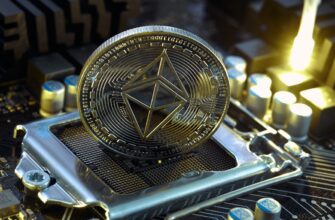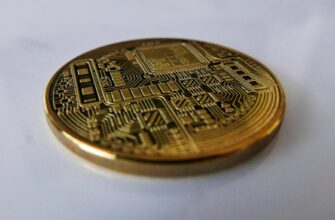- Understanding Ethereum AYA: A New Frontier in Decentralized Technology
- How Ethereum AYA Enhances Blockchain Capabilities
- Real-World Applications of Ethereum AYA Technology
- Getting Started with Ethereum AYA: A Step-by-Step Guide
- Frequently Asked Questions About Ethereum AYA
- The Future of Ethereum AYA in Web3 Evolution
Understanding Ethereum AYA: A New Frontier in Decentralized Technology
Ethereum AYA represents an emerging concept blending Ethereum’s robust blockchain infrastructure with innovative tokenomics or protocol enhancements. While “AYA” isn’t a standardized Ethereum term, it often refers to experimental projects, layer-2 solutions, or community-driven tokens aiming to advance scalability, sustainability, or decentralized governance. As Ethereum evolves beyond its Proof-of-Work roots, initiatives like AYA symbolize the ecosystem’s relentless push toward greater efficiency and inclusivity.
How Ethereum AYA Enhances Blockchain Capabilities
Ethereum AYA projects typically focus on solving core challenges like transaction speed, gas fees, or environmental impact. By leveraging Ethereum’s smart contract functionality, AYA-driven developments may include:
- Hybrid Consensus Mechanisms: Merging Proof-of-Stake with novel validation protocols for energy efficiency.
- Modular Architecture: Enabling customizable blockchain layers for specific dApp needs.
- Zero-Knowledge Rollups: Bundling transactions off-chain to reduce mainnet congestion.
- DAO Governance: Empowering token holders to steer protocol upgrades democratically.
These innovations position Ethereum AYA as a catalyst for Web3 adoption, potentially reducing entry barriers for developers and users alike.
Real-World Applications of Ethereum AYA Technology
From DeFi to NFTs, Ethereum AYA frameworks unlock transformative use cases:
- Decentralized Finance (DeFi): Facilitating near-instant cross-chain swaps with minimal fees through optimized layer-2 solutions.
- Supply Chain Tracking: Using tamper-proof AYA-enabled ledgers for transparent product journey records.
- Green NFT Marketplaces: Hosting carbon-neutral digital collectibles via eco-conscious consensus models.
- Play-to-Earn Gaming: Enabling scalable in-game economies with seamless microtransactions.
Getting Started with Ethereum AYA: A Step-by-Step Guide
- Research Projects: Explore AYA-linked initiatives like Aya Protocol or similar experimental networks.
- Set Up a Wallet: Use MetaMask or Trust Wallet compatible with Ethereum testnets.
- Acquire Test Tokens: Obtain faucet ETH or AYA tokens for experimentation.
- Engage in Governance: Participate in DAO voting if the project supports decentralized decision-making.
- Build dApps: Develop applications using AYA’s SDKs for enhanced scalability.
Frequently Asked Questions About Ethereum AYA
Q: Is Ethereum AYA an official Ethereum upgrade?
A: No—it’s typically a community or developer-led initiative rather than an Ethereum Foundation release, often serving as a testing ground for new concepts.
Q: How does AYA improve Ethereum’s environmental impact?
A: By implementing energy-efficient consensus layers or carbon-offset mechanisms, reducing the network’s overall carbon footprint.
Q: Can I invest in Ethereum AYA tokens?
A: Exercise caution—many AYA tokens are experimental. Verify project legitimacy via audits and community channels before participating.
Q: What wallets support Ethereum AYA assets?
A: Most EVM-compatible wallets (e.g., MetaMask) can hold AYA tokens if they’re ERC-20 standard. Always confirm contract addresses.
Q: How is AYA different from Ethereum 2.0?
A: Ethereum 2.0 refers to Ethereum’s core upgrade to Proof-of-Stake. AYA usually denotes auxiliary projects building atop Ethereum, not the base layer itself.
The Future of Ethereum AYA in Web3 Evolution
As Ethereum continues its transition to a scalable, sustainable ecosystem, AYA-style innovations will likely play a pivotal role. By addressing throughput limitations and energy concerns, these projects could accelerate enterprise adoption and mainstream DeFi integration. For developers and enthusiasts, engaging with Ethereum AYA today offers a front-row seat to blockchain’s next evolutionary leap—where flexibility, efficiency, and user empowerment converge.








